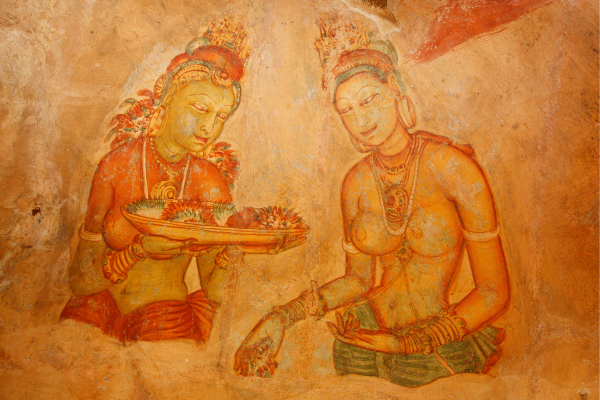
Sigiriya, also known as the Lion Rock, is a remarkable archaeological site located in the central part of Sri Lanka. Recognized as a UNESCO World Heritage Site, Sigiriya stands as a testament to the ingenuity and architectural brilliance of ancient civilizations. This ancient rock fortress, with its towering presence and rich historical significance, has become a symbol of Sri Lanka’s cultural heritage.
Historical Background:
The history of Sigiriya dates back to the 5th century when King Kasyapa chose the massive rock to build his palace complex. The king, fearing retribution from his half-brother, sought refuge on the summit of Sigiriya. To fortify his position, he transformed the rock into a formidable fortress, complete with gardens, ponds, and intricate frescoes.
Architectural Marvels:
One of the most striking features of Sigiriya is the Lion Gate, located at the entrance of the fortress. Originally constructed in the shape of a lion, only the enormous paws remain today. The ascent to the summit involves climbing a series of staircases and pathways, showcasing the advanced engineering skills of the ancient builders.
The Frescoes:
The Sigiriya frescoes are a highlight of the site, depicting celestial maidens in vibrant colors. These paintings, adorning a sheltered rock face, provide a glimpse into the artistic prowess of the ancient inhabitants. The preservation of these frescoes over centuries is a testament to the skill and craftsmanship of the artists.
The Mirror Wall:
Along the climb, visitors encounter the Mirror Wall, a highly polished surface that once reflected the surroundings and was possibly used as a mirror by the king. Over the years, visitors have etched their thoughts and poetry onto the wall, offering a unique historical record of sentiments spanning many centuries.
The Summit:
Upon reaching the summit, visitors are rewarded with breathtaking panoramic views of the surrounding landscape. The remains of the royal palace, including the throne platform, cisterns, and remnants of ancient structures, provide insight into the opulence and grandeur of King Kasyapa’s court.
Cultural Significance:
Sigiriya’s cultural significance extends beyond its historical and architectural marvels. It has inspired artists, writers, and scholars over the centuries, leaving an indelible mark on Sri Lankan culture. The site serves as a bridge connecting the past and present, fostering a sense of national pride and identity.
Preservation and Tourism:
Efforts to preserve Sigiriya have been ongoing, with conservation projects and measures in place to protect the site from natural erosion and human impact. Despite the challenges, Sigiriya attracts visitors from around the world, drawn by its unique blend of history, architecture, and natural beauty.
Sigiriya stands as a testament to the enduring legacy of ancient civilizations. Its awe-inspiring architecture, vibrant frescoes, and historical significance make it a jewel in Sri Lanka’s cultural crown. As a UNESCO World Heritage Site, Sigiriya continues to captivate the imagination of those who venture to explore its mysteries, providing a glimpse into the rich tapestry of Sri Lanka’s past.






Copyright © 2023. Web Site Develop by eLanka

